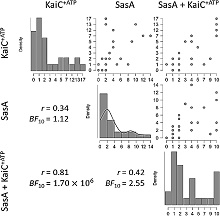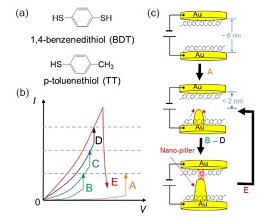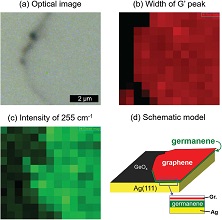Featured articles
-
Volume 65 (2022) Issue 1 Pages 15-20Data-driven Analytics on Scanning Probe Imaging of Biomolecules Read more
-
Volume 64 (2021) Issue 12 Pages 556-561Chemical-state Imaging of Materials Using X-ray Microscopes Read more
-
Volume 64 (2021) Issue 11 Pages 493-498Laboratory-based Hard X-ray Photoelectron Spectroscopy for Fundamental and Industrial Research Read more
-
Volume 64 (2021) Issue 10 Pages 476-481Database for Auger and Secondary Electron Spectra Based on Absolute Measurements Read more
-
Volume 64 (2021) Issue 9 Pages 406-410Investigation of Molecular Bridging Using Atom Migration in Nanogap Electrodes Read more
-
Volume 64 (2021) Issue 8 Pages 358-363Direct Growth of Germanene at Interfaces between van der Waals Materials and Ag(111) Read more
-
Volume 64 (2021) Issue 7 Pages 294-300Quasi-Nanbu Scheme Extended to Diatomic Molecules and Gas Mixtures Read more
-
Volume 64 (2021) Issue 6 Pages 254-261Development of Photoelectron Momentum Microscope to Molecular Science Read more
-
Volume 64 (2021) Issue 5 Pages 206-211In situ Observation of Cracking and Degradation of Structural Materials ∼X-ray Microscopy and Time-resolved Observation Using Synchrotron Radiation∼ Read more
-
Volume 64 (2021) Issue 4 Pages 156-161Electrolyte Membranes for Polymer Electrolyte Fuel Cells Read more
-
Volume 64 (2021) Issue 3 Pages 113-117Electron-phonon Coupling and Inelastic Electron Tunneling Spectroscopy Read more
-
Volume 64 (2021) Issue 2 Pages 62-67Future Perspectives of Si Electronics and Heterogeneous Integration Read more
-
Volume 64 (2021) Issue 1 Pages 4-9Recent Progress on Organic Semiconductor Laser Molecules Read more
-
Volume 63 (2020) Issue 12 Pages 649-655Understanding of Interaction of Nonthermal Plasma with Catalyst and its Case Study for Low Temperature CO Oxidation Read more
-
Volume 63 (2020) Issue 11 Pages 566-573Overviews and Outlook of Functional Surface Fabrication by Nanoimprint Technology Read more
-
Volume 63 (2020) Issue 10 Pages 514-518Generation of Slow Ytterbium Atom Vapor by a Laser-Dissociation of a Metal Oxide and Trapping by a Magneto-Optical Trap Read more
-
Volume 63 (2020) Issue 9 Pages 492-497Bottom-up Growth of Graphene Nanoribbons for Application to Electronic Devices Read more
-
Volume 63 (2020) Issue 8 Pages 431-436Electrical Conductivity Across Line Defects on the Si(111)-7×7 Surface Read more
-
Volume 63 (2020) Issue 7 Pages 373-380Simple Method for Calculating the Flow Rate in a Cylindrical Tube of Arbitrary Length over a Whole Flow Regime Read more
-
Volume 63 (2020) Issue 6 Pages 277-282Development of Electrochemical Tip-Enhanced Raman Spectroscopy for Chemical Analysis at the Electrified Interfaces Read more





